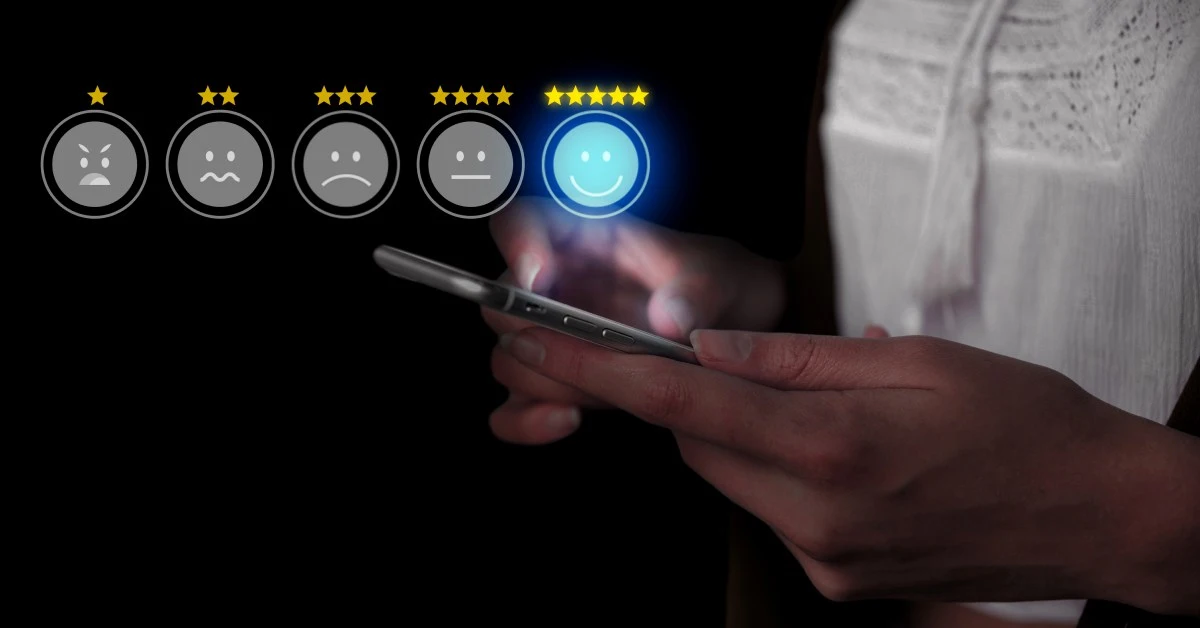How to Design an Impactful Customer Experience Strategy

Creating a customer experience strategy is about more than meeting user expectations. Instead, it focuses on creating memorable interactions at each contact point. This helps users find value in your product or service and helps them become loyal customers.
Imagine you are rambling in a market and looking for the right product. You see two shops selling similar products, but you buy from only one.
Why?
It’s not just about the products they offer but also the experience they provide. This highlights the power of a well-designed customer experience strategy. Just like choosing the right shop in the market, users gravitate towards products and services that provide a seamless experience.
In this post, we’ll explore why customer experience strategy is crucial for Knowmax and how you can build a winning strategy for your knowledge base.
Table of contents
- What is a Customer Experience Strategy?
- How to Measure Customer Experience?
- What is the Importance of Customer Experience Strategy?
- How to Build a Customer Experience Strategy?
- Best Practices for Building a Customer Experience Strategy
What is a Customer Experience Strategy?
A CX strategy acts as a plan that guides how a company engages with its customers at all points of interaction during their experience. It sets forth the guidelines for creating positive and unforgettable experiences throughout the customer’s journey.
A good strategy involves measuring how customers perceive high-quality experiences over time. It involves understanding customer needs, designing tailored experiences, and providing good interactions. This includes making continuous improvements based on customer feedback.
How to Measure the Customer Experience
Measuring the effectiveness of your CX strategy is essential for continuous improvement. Key metrics to consider include:
Net Promoter Score (NPS)
Net Promoter Score (NPS) is a metric that gauges customer loyalty by asking a single question: “How likely are you to recommend our product/service to a friend or colleague?“
Responses are typically on a scale of 0 (not at all likely) to 10 (extremely likely).
Based on their answers, customers are categorized into three groups: Promoters (Score 9-10), passives (Score 7-8), and detractors (Score 0-6).
NPS = % Promoters – % Detractors
For example, if 60% of respondents are promoters, 50% are passives, and 10% are detractors, your NPS score would be 60-10 = 50.
Customer Satisfaction (CSAT)
CSAT specifically measures your customers’ overall satisfaction with their interactions with the product or service offered by your business.
To calculate CSAT, you can collect customer feedback through surveys, forms, or questionnaires. In feedback, customers give your product or service a rating on a scale from 0 to 5, with 1 being “very dissatisfied” and 5 being “very satisfied.”
CSAT = (Total Number of Satisfied Responses / Total Number of Responses) x 100
For example, if you have 100 responses and 80 customers indicate they are “very satisfied,” the calculation would be:
CSAT Score = 80/100 x 100 = 80%
Customer Effort Score (CES)
Customer effort score measures how difficult or easy it is for your customers to navigate your product. It can also help you discover what difficulties customers face when communicating with your product.
To measure CES, a survey with questions is prepared. In this survey, customers rate the ease or difficulty of a specific interaction. The survey scale usually ranges from 1 (very difficult) to 7 (very easy).
CES Score = Sum of customer effort ratings/Total number of survey responses
Customer Lifetime Value (CLV)
Customer Lifetime Value (CLV) is a metric that helps businesses estimate the total revenue a customer generates throughout their entire relationship with the company.
CLV = Customer Value x Average Customer Lifespan
Average Customer Value (ACV) can be calculated by taking the total revenue generated from customers in a specific period and dividing it by the total number of customers in that period.
Average Customer Lifespan (ACLS) is calculated by analyzing historical customer data to determine the average time customers remain active.
Customer Retention Rate
Customer retention rate indicates how many customers will continue to use your product. Specifically, if customers are satisfied with the company’s products or services. Simply put, CRR assesses how well your organization retains consumers.
Customer Retention Rate = (Number of Customers at the End – Number of New Customers Acquired / Number of Customers at Start) x 100
What is the Importance of Customer Experience Strategy?
Developing a strong customer journey strategy is critical for business success. Here’s why:
Empowers Satisfied Customers
A customer experience strategy that is robust puts the customer first and ensures that they have a good experience with the brand. This leads to higher customer satisfaction, loyalty, and, eventually, higher CRRs. By having loyal customers, it increases the chances of them remaining with you and becoming repeat buyers.
Maximizes Customer Lifetime Value (CLV)
By prioritizing superior customer interactions, you foster customer loyalty and extend their engagement with your offerings. This not only increases the likelihood of repeat purchases but also elevates the cumulative value (CLV) they bring to your business throughout their patronage.
Boosts Brand Advocacy
Happy customers are your best brand ambassadors. Positive word-of-mouth recommendations and internet reviews can help boost your brand’s reputation and attract new clients naturally. Strong customer advocacy can result in greater revenue without additional marketing efforts.
Reduces Churn and Protects Reputation
A well-designed customer experience strategy identifies and addresses potential pain spots before they turn into negative experiences. This proactive approach decreases customer churn (loss of consumers) and safeguards your brand’s reputation against negative.
How to Build a Customer Experience Strategy?
1. Understand your audience
The first step toward developing a good strategy involves understanding your audience. Create buyer personas to find out what your customers want. Also, understand their priorities and pain points.
A buyer persona is a “character” that is developed through research to represent a general group of people. By developing 1-5 personas for your customer base, you can better understand how your customers think and create experiences for the most valuable segments.
2. Pay attention to feedback
Paying attention to customer feedback is an important factor in building a customer experience strategy. Listen to your customers and continually improve based on their input. It’s also important to connect customer feedback to customer support agents, which shows the team the difference they’re making to the business.
Take advantage of social media listening tools to gather feedback. Additionally, use surveys, interviews, and focus groups. Keep an eye on what customers say online about your company and brand of products.
This allows you to improve your services and existing products and fix problems. More importantly, paying attention to customer feedback shows customers that you value their opinions. In this way, your customer experience will also be better.
3. Map the customer journey
Identify critical touchpoints along the client journey and ensure that each stage delivers a consistent experience.
From the moment a consumer views your company’s advertisement until they make their first purchase, they interact with your company’s reps several times. It’s a milestone in their customer journey, whether online, offline, or on social media platforms.
Once you become aware of those interactions, you can fine-tune the process by finding ways to reduce the problems and pain points that arise within them.
4. Developing Customer-Centric Processes
Design internal processes that prioritize customer needs. Streamlining workflows, empowering customer service objectives, and building a customer-obsessed culture across all departments could be part of this.
5. Continuously Monitoring and Refining
Periodically assess your CX metrics, such as NPS, CSAT, and CLV, to measure progress against your goals. Be ready to tweak your strategy, considering data findings and changing customer expectations.
Best Practices for Building a Customer Experience Strategy
To build a solid customer experience strategy framework, consider the following practices:
1. Research
The first step in your customer experience strategy is research. Research your competition to learn what they are doing. Surveys, interviews, and feedback can help you understand your customers’ preferences, pain spots, and expectations.
2. Focus on company goals
Focusing on company goals is also essential to a good CX framework. Your company’s goals should paint a fair picture of the ideal customer experience you envision.
Your goals should be practical, attainable, and, most importantly, consistent with your company’s overall vision.
3. Create a clear customer experience vision
It’s essential to have a clear customer-centric vision in your strategy framework that you can communicate to your organization. The easiest way to approach this is to create a set of statements that serve as guiding principles.
4. Focus on empathy
Learn to appreciate the customers’ point of view. Listen carefully to customers’ problems to identify what bothers them or areas where you can simplify their experience.
5. Embrace omnichannel consistency
Ensure a consistent consumer experience at whichever touchpoint –your website, social media, mobile app, or physical stores, irrespective of the channel used. Customers expect uniformity in brand messaging as well as service quality.
6. Empower your employees to deliver exceptional CX
Train and empower your employees to deliver exceptional customer service. Give them the knowledge and tools they need to address client complaints swiftly while fostering positive customer interactions.
7. Leverage technology
Use technology to improve your customer experience strategy. Use digital tools, artificial intelligence, and social media platforms to enhance customer interactions, reduce process complexity, and deliver personalized experiences. And it can also include technologies like automation.
Automation can also help you streamline operations. You can set up automated email responses acknowledging customer queries or a customer service chatbot to assist customers.
8. Implement continuous improvement
Your company’s relationship with its customers is constantly changing. Once customers become accustomed to standard service, they will naturally expect more from your company. That’s why you should keep improving your consumer strategy framework.
Your customer experience strategy should reflect these dynamics. Continuous improvement is the only way to sustain customer satisfaction and a great experience.
Conclusion
In today’s time, where customers have countless options, a well-crafted customer experience strategy goes a long way. Designing an effective strategy requires a deep understanding of customer needs, a clear framework for implementation, and consideration of ongoing measurement and improvement.
Related Post
Copyright © gocustomerexperience.com. All Rights Reserved.




